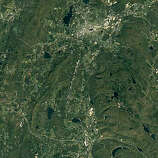

The quadrillions of pixels needed to make Timelapse in Google Earth possible are the result of more than 24 million satellite images gathered from 1984 to 2020. Timelapse was made with what Google refers to as 'pixel crunching' in Earth Engine, the company's cloud-based platform for geospatial analysis. Clicking on any of these categories takes you through a guided tour of some of the spots in the world where change has been noticeable. Their research revealed five areas where our planet was experiencing the most rapid development and change: forest change, urban growth, warming temperatures, sources of energy, and fragile beauty. The Google Earth team worked with Carnegie Mellon University's CREATE Lab to develop the technology that powers Timelapse.

You can explore the past four decades of change an development with Timelapse for Google Earth. You can view how any place has changed over the past four decades. A big motivating factor for creating this latest development was to expose people to the impact of climate change. Recently, they introduced Timelapse in Google Earth – an interactive 4D experience consisting of 24 million satellite photos captured over the past 37 years. “We hope that this perspective of the planet will ground debates, encourage discovery and shift perspectives about some of our most pressing global issues,” she wrote.Since launching 15 years ago, Google Earth has displayed detailed 3D imagery of our planet from numerous vantage points. Moore said the feature would be updated annually with new images of Earth’s alterations. To use Timelapse, you can either visit g.co/Timelapse directly or click on the Ship’s Wheel icon in Google Earth, then select Timelapse. Carnegie Mellon University’s CREATE Lab helped develop the technology. Geological Survey’s Landsat satellites and the European Union’s Copernicus program and Sentinel satellites. The images for Timelapse were made possible through collaboration with NASA, the U.S. It is intended to show large changes over time, rather than smaller details like the construction of a road or home. The feature does not offer the detail of Street View, Gizmodo noted. You can enter any location into the search bar, including your local neighborhood, CNN explained.

However, the feature also allows you to see smaller-scale change.


 0 kommentar(er)
0 kommentar(er)
